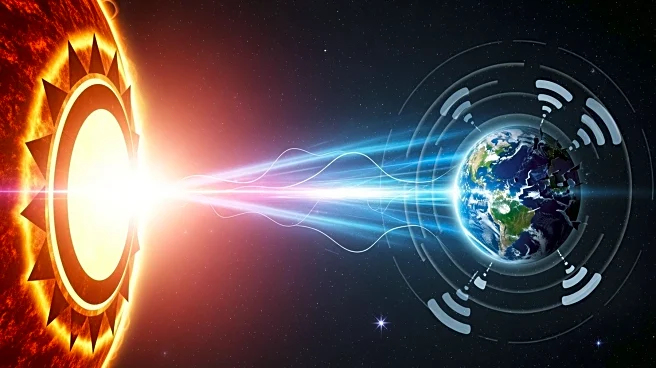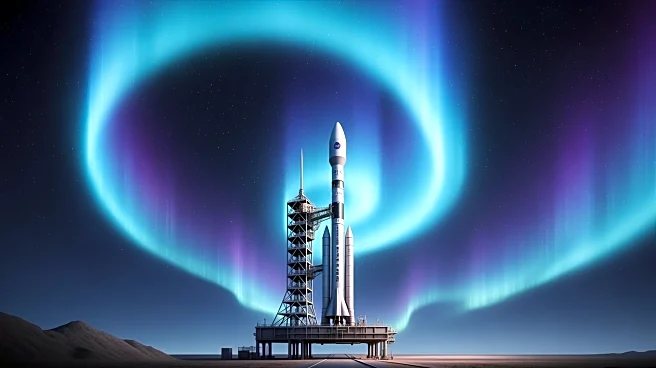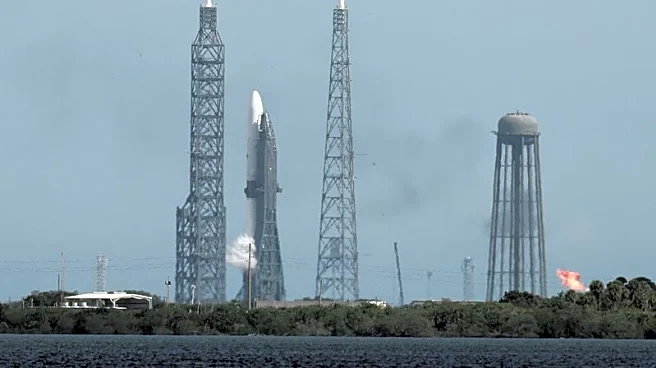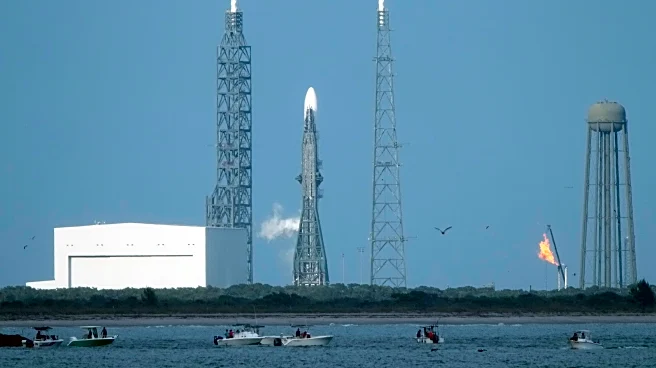What's Happening?
A severe solar storm is currently affecting Earth, causing significant disruptions to radio communications and GPS accuracy. The U.S. National Oceanic and Atmospheric Administration (NOAA) has confirmed that G4 'severe' geomagnetic storm levels were reached
early on November 12, 2025. The European Space Agency (ESA) has warned of a third coronal mass ejection (CME) that could arrive soon, potentially prolonging these disruptions. The storm has led to widespread aurora borealis displays, visible as far south as Florida. In the UK, the British Geological Survey has raised its forecast to the highest intensity, indicating this could be the most significant solar storm in over two decades.
Why It's Important?
The ongoing solar storm has significant implications for various sectors. Disruptions in GPS accuracy can affect industries reliant on precise navigation, such as aviation, agriculture, and logistics. Radio communication blackouts can impact emergency services and military operations. The storm also poses risks to satellites, potentially causing increased drag and sensor anomalies. Power grids are at risk of geomagnetically induced currents, which can lead to voltage irregularities and transformer stress. While there is no direct biological threat to humans, the storm highlights the vulnerability of modern technology to space weather events.
What's Next?
The ESA predicts that severe geomagnetic activity may continue into the latter part of the week. The potential merging of incoming CMEs with earlier ones could extend the duration and intensity of the storm. Stakeholders in affected industries are advised to monitor updates from space weather agencies and prepare for continued disruptions. NASA has already postponed a Mars mission launch due to the heightened solar activity, and further operational adjustments may be necessary as the situation develops.
















